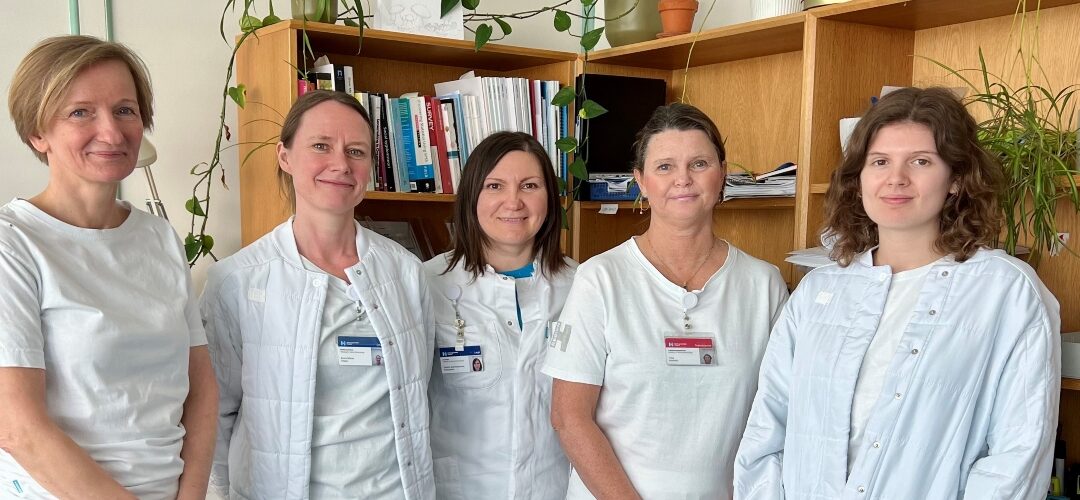Jette Nygaard Jensen is a researcher focusing on antibiotics and belongs to the Region Hovedstaden. In the IMAGINE project, she is the leader of Work Package 2, whose main mission is to develop a tailored infection prevention and AMS intervention for health professionals.
In this interview, we speak with her about the project, its development, and her experience in this team with professionals from different parts of Europe.
Can you describe briefly what you do and what your role as a partner is within the IMAGINE project?
I’m the work package leader of Work Package 2 in the IMAGINE project. So, together with the rest of the team, I ensure that we fulfil the objectives of our work package, maintain high-quality and evidence-based work tasks, and, of course, meet our deadlines.
Can you explain what are the main objectives of Work Package 2 (WP2) in the IMAGINE project in terms of intervention for infection prevention and antibiotic management?
The main objective is to develop intervention tools for improvement areas related to infection prevention and rational use of antibiotics. However, as there is a lack of data and knowledge on infection prevention and antibiotic use in nursing homes, our initial tasks in IMAGINE were to gather solid data information to identify potential areas for improvement.
So, our first step in IMAGINE was to conduct a survey distributed to participating nursing homes, querying them about equipment and care task-related habits. This survey provided an initial overview, and its results were used to develop an interview guide for a comprehensive qualitative study.
Secondly, we conducted a qualitative study to explore barriers and facilitators affecting correct infection prevention and optimal antibiotic use as experienced by nursing home staff.
Finally, we observed daily care practices at nursing homes by developing an infection prevention audit where IMAGINE ambassadors observed colleagues performing care tasks with residents.
Altogether, the results from the three studies form the foundation for developing intervention tools.
How is the design of the toolboxes being developed according to the needs of the nursing homes?
Based on the results from our three studies, we can see where there is “room for improvement”. So the first thing that we and the country coordinators will do is to present the results to IMAGINE ambassadors at the participating nursing homes and to get feedback from them: What do they think about the results, can they recognize the results from their own daily practice and which improvement areas they would like to implement in their nursing home. This feedback will support the development of the tools.
Could you describe the process that WP2 will follow to adapt interventions to the specific needs of each target organisation, considering cultural and contextual differences?
The concept of the development of the tools is based on an ongoing feedback process between the IMAGINE ambassadors, the country coordinators, and WP2. This process is called “participatory action research”, and it is a promising method that actively involves the nursing home staff by using their reflections and experience. This method is suitable to take local barriers and cultural and contextual differences into account.
What role will interdisciplinary teams play in the implementation of WP2 interventions, and how is it expected that they will collaborate with each other?
One of the strengths of IMAGINE is the interdisciplinary approach. First, we have the nursing home staff who are local experts, and then we have our IMAGINE consortium consisting of a wide range of representatives from the healthcare sector, general practitioners, geriatrics, microbiologists, infection prevention control nurses, project managers, health economists, statisticians, communicators, graphic designers, and researchers. Our collaboration ensures that “we cover” all important aspects of the intervention, which I believe will increase successful implementation.
What does it mean to you to work on a project with partners from different countries?
First, it is an absolute joy to collaborate with other people who share the same interest as I have; how do we promote and implement rational use of antibiotics. I think that the members of the consortium enrich each other because we come with different perspectives and different methods but through our (many!) fruitful discussions I think that we always come to good solutions for the IMAGINE project.
Include any aspect you find interesting to highlight about your Work Package or the IMAGINE project.
The IMAGINE project is the first international project to focus on the improvement of infection prevention as well as antibiotic stewardship. These are two important approaches that should always complement each other. One cannot do without the other, so to speak. I think that our work package nails that because our point of view is that many infections can be prevented through good hygiene but when infections occur and need antibiotics, they should be treated as rationally as possible. It is from this perspective that WP2 will investigate improvement areas and develop tools for implementation.

